The casual observers might never guess. They see a few strong images from a photographer and assume everything they touch turns to gold.
Nice idea, right? I enjoy a good fantasy too.
I can’t really blame them. Most of us only share our best work. The rest of it? That garbage gets trashed, buried, or quietly forgotten. Some folks keep everything they shoot; I don’t even pull weak shots off the card. I skip them when I upload, and then hit format.
You might ask, “Why shoot so much crap in the first place? What’s wrong with you, Dobkin?” (Spoiler: it’s a long list.)
Some of it’s… well, me, of course. And some of it is just the nature of the work. Such is wildlife. The models don’t take direction well.

All this is on my mind as I build out my book on the wildlife of Goose Creek. As I shape the narrative, I’ve noticed gaps—images I need to include to complete a story, or images to complement another shot. So I’ve been filling them in, either by heading back out to take something new or by digging through old archives looking for a good match.
Nothing reminds me of all my misses like this gap-filling exercise. For example:
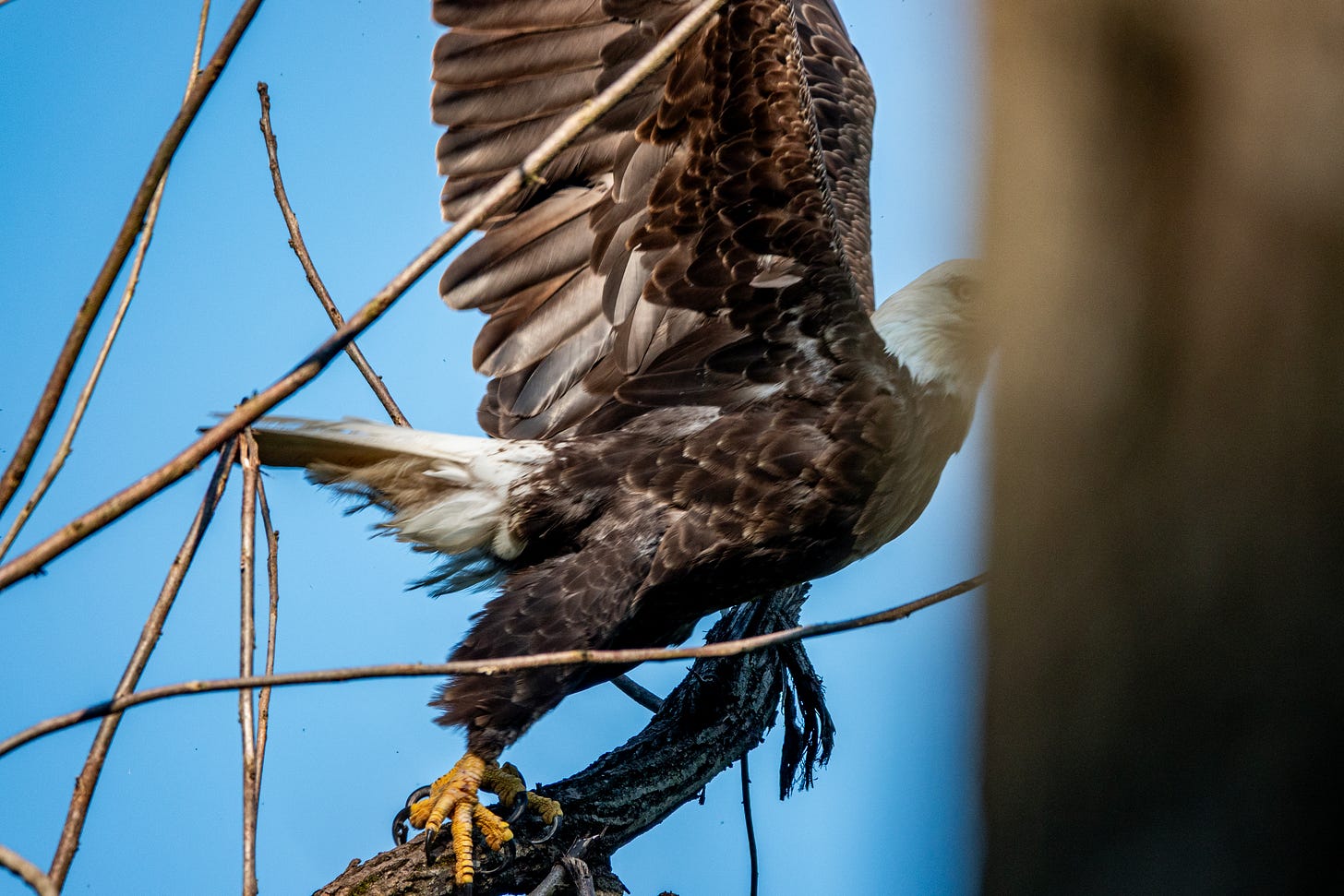
The thing about wildlife shooting, especially if you are on the move as opposed to sitting in a blind or something, is that you can only be so prepared with subjects like these. I do my best, and preparation helps me get more total images than if I were haphazard, but the percentage is simply woeful. I don’t even want to know the numbers.
And it’s important for me to accept this fact.
For this book I’m shooting of all kinds of species, to represent all the great stuff I can see on a specific trail. The story creates its own challenges. I’m not able to select a location where it’s easy to see and photograph bald eagles, for example. There are places where they congregate and where you might catch them in the act of grabbing a fish, or any number of other wonderful, unobstructed behaviors. Brilliant imagery could be made about 45 minutes away from where I live, probably many times over by now.
But that’s not the narrative of this book. Too bad, so sad. To fit the story, I need to capture the images right here. Otherwise it’s some other story, but not this one. That means I need to find the eagles in a tree right next to me, or in gaps in the foliage along the trail.1
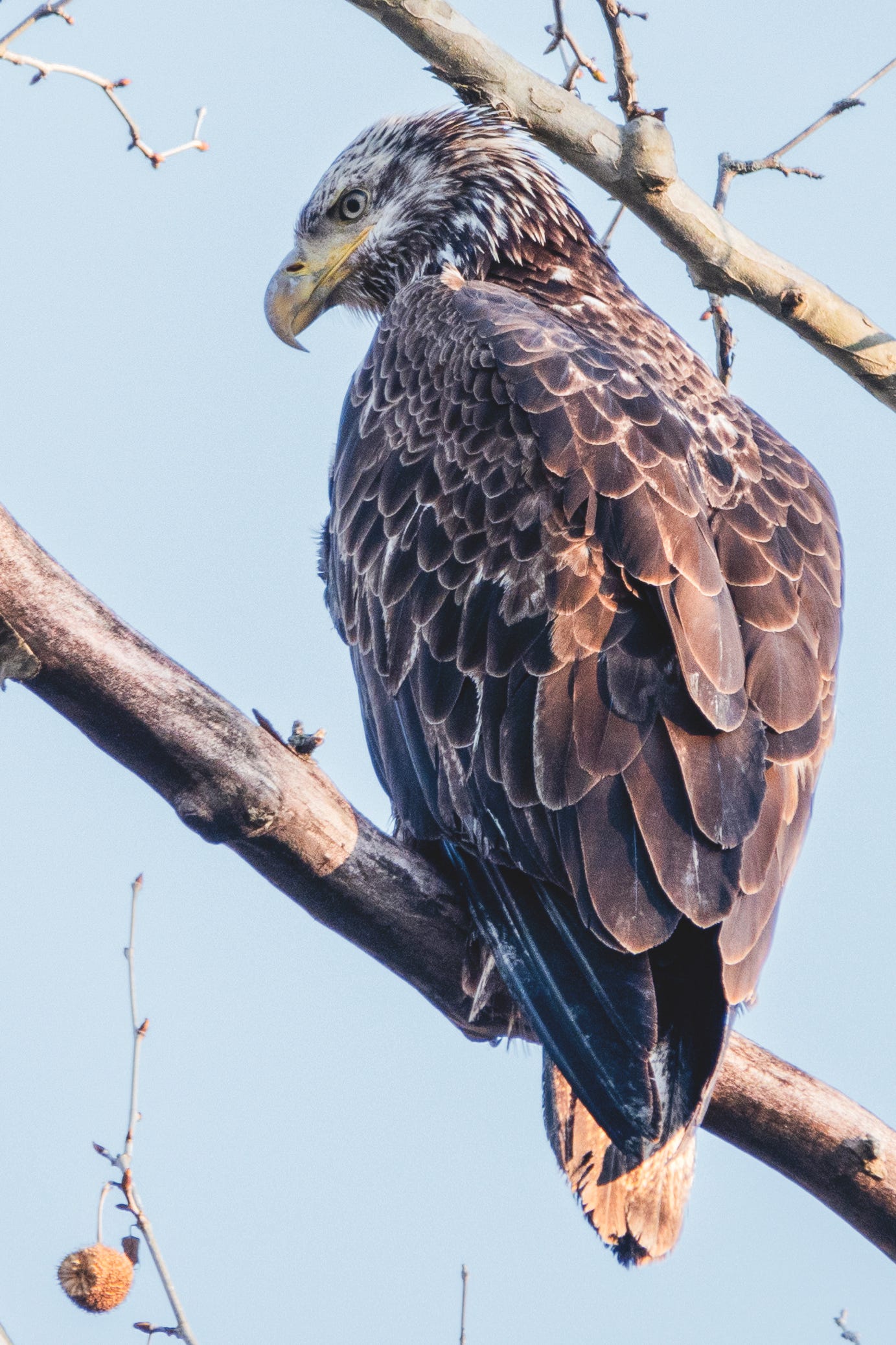
I never know in advance where things will be along the trail. So I choose camera settings as I walk, based on the most likely target I could expect to encounter in a given moment.
Depending on the time of day and what I’ve been seeing lately, I might expect to find good stuff in the forest. If so, I would walk with a neutral exposure and keep the shutter speed low, to deal with limited light conditions. But I’d need to brighten things up fast if the subject were up in a tree, backlit, so I’d need to be ready for that on-the-fly adjustment.
At other times I may think the best images will be in or near the water. Then I’ll walk with a higher shutter speed and (typically) exposure compensation to darken the subject by one stop, two, or even three, depending on how the light is hitting and whether my predicted subject is lightly colored or not.
It’s an educated guessing game. I can change exposure compensation faster than I can change shutter speed on my camera, but I try to be ready to change both in case I guess wrong, and I keep my zoom at the amount of magnification that seems best for the situation, too. That way I’m quicker to the draw, and at least my chances of getting something improve. Because frequently I’ll only have a short time, sometimes less than a second, to get the shot. Even though I’m holding the camera up close to my eyes as I walk.
The other default setting I use is burst mode. If I see a landscape or something that only needs one exposure, I’ll either make it a short burst, knowing that I’ll only import one of the images, or I’ll know that I have time to change to a single shot because, well, the landscape tends not to fly away or run past me. As soon as I’m finished with the single shot I’ll change my settings back to burst and whatever exposure settings seem best. If I don’t, I’ll be sorry. Murphy’s Law.
And I have to decide in advance how fast I want to burst. If you want to be able to catch an animal in mid-leap or with wings in exactly a particular “pose” you can go with a very rapid burst. That can give you almost as many images as a video, and you can pick exactly the shot you want to use once you get home.
But rapid burst fills up your buffer in a hurry, so you better get what you want in that first burst. It is supremely frustrating to be aiming at a slower-developing, fantastic scene, to keep pressing the button, and nothing happens because the processor is busy. Ask me how I know.
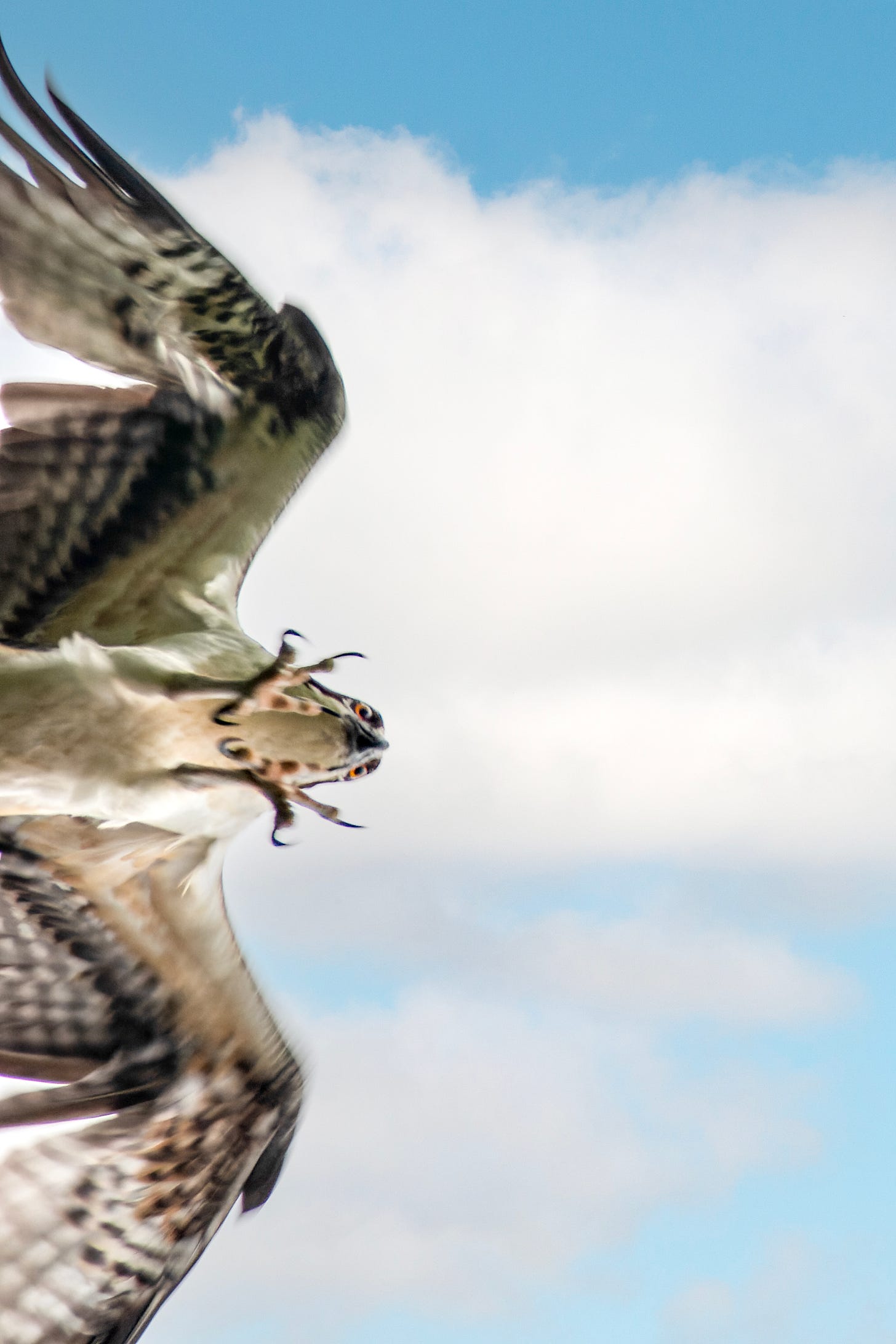
I just have to live with the low percentages. I have missed waaaayyyyyyy more shots than I’ve made, and that’ll continue to happen.
But if I’m willing to accept this as part of the deal, and try to make something interesting each time out, I never know what I’ll get. As long as I’m ready. It could turn out to be something I want to keep. It’s impossible to know.
But something could happen, and I might like it.
Until next time,
Is there something here you like or dislike? Questions? Have anything else to say? Let us all know by clicking on the Comments button below, and express yourself. Don’t be shy, now.
If you like this post you’re bound to like the next one as well. I’m sending them weekly. Quit any time, or better yet, stay and read on!
Know anybody who should hear about all this? Be a friend and let them know!
Or, are you interested in seeing more work? My website welcomes you. We may even want to work together. I promise a joyous and productive experience if we do.
Visit: www.dobkinphoto.com
I can’t tell you how many times I’ve seen traces of them through trees but had no chance to get something. Once I was in a little clearing and the bird was flying down the creek, headed towards the clearing. I could track it through branches, had all my settings in place, was about to get a really nice sequence, beautiful lighting, background, the whole thing. And then just as it got within two feet of “clear” the !$#@!$ thing turned around like an Indy driver on a hairpin turn, and it never got to me. Poof. Dang it.
Eventually, on a different day, I finally got a few seconds to capture one from one of those little clearings, before it soared out of view.




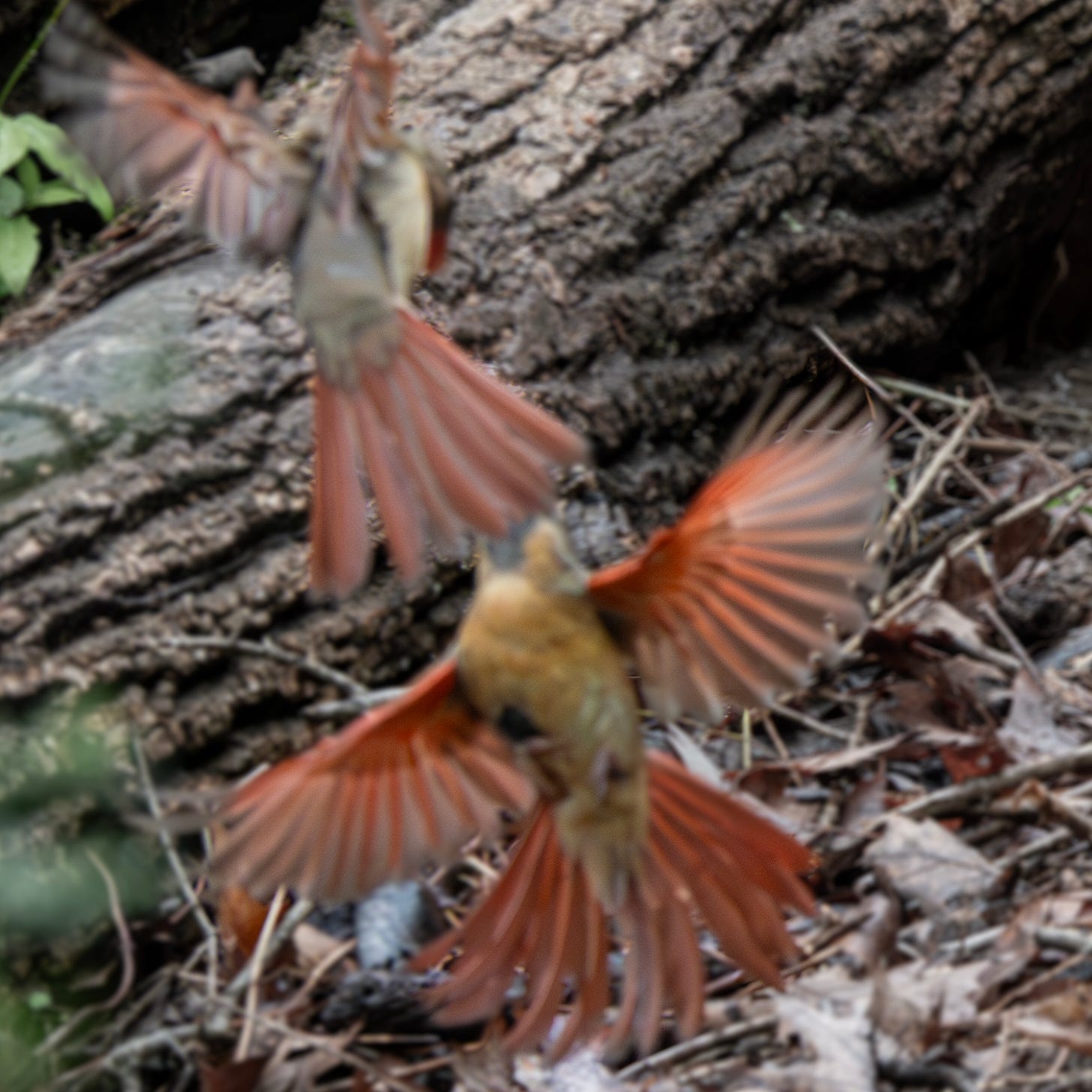
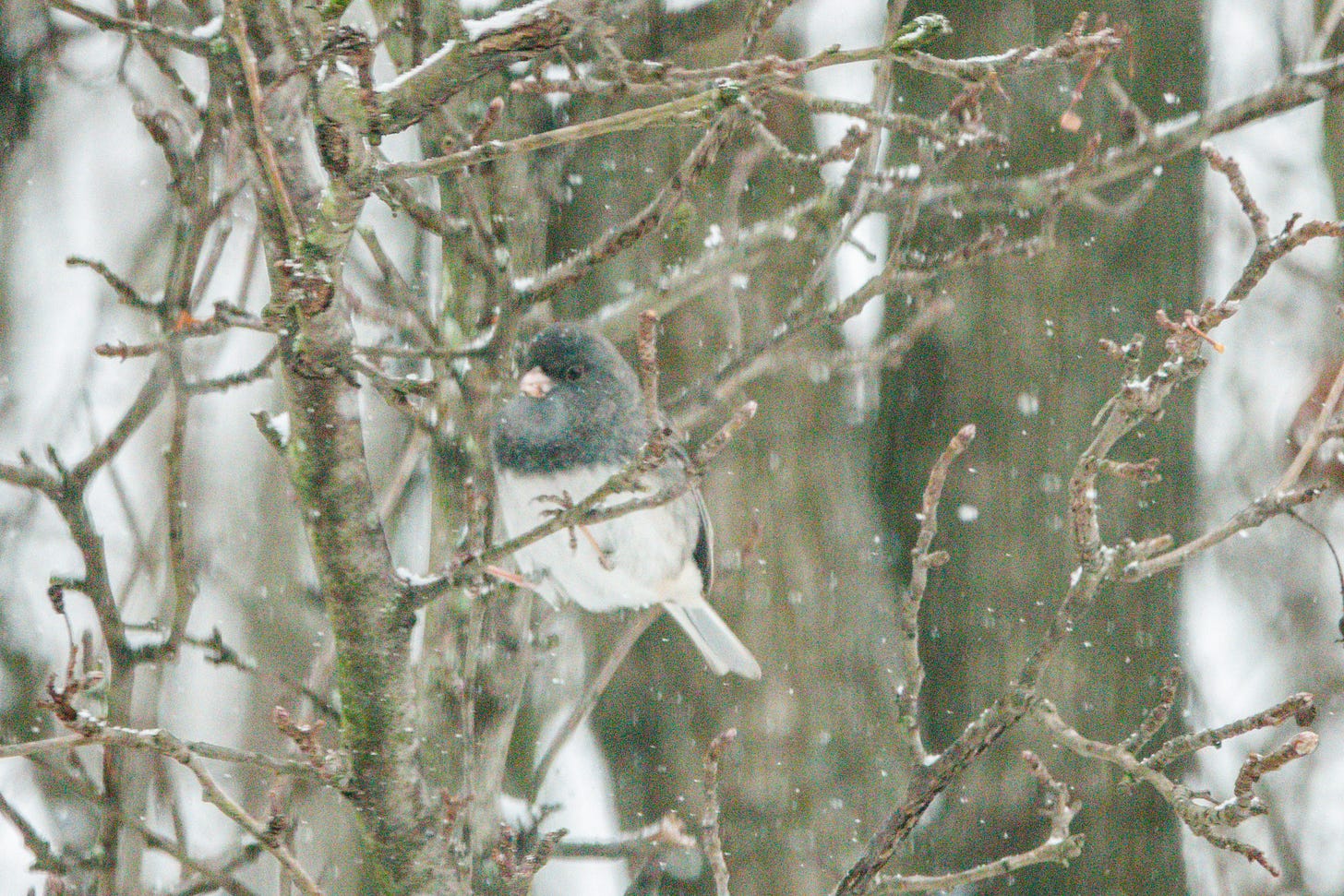
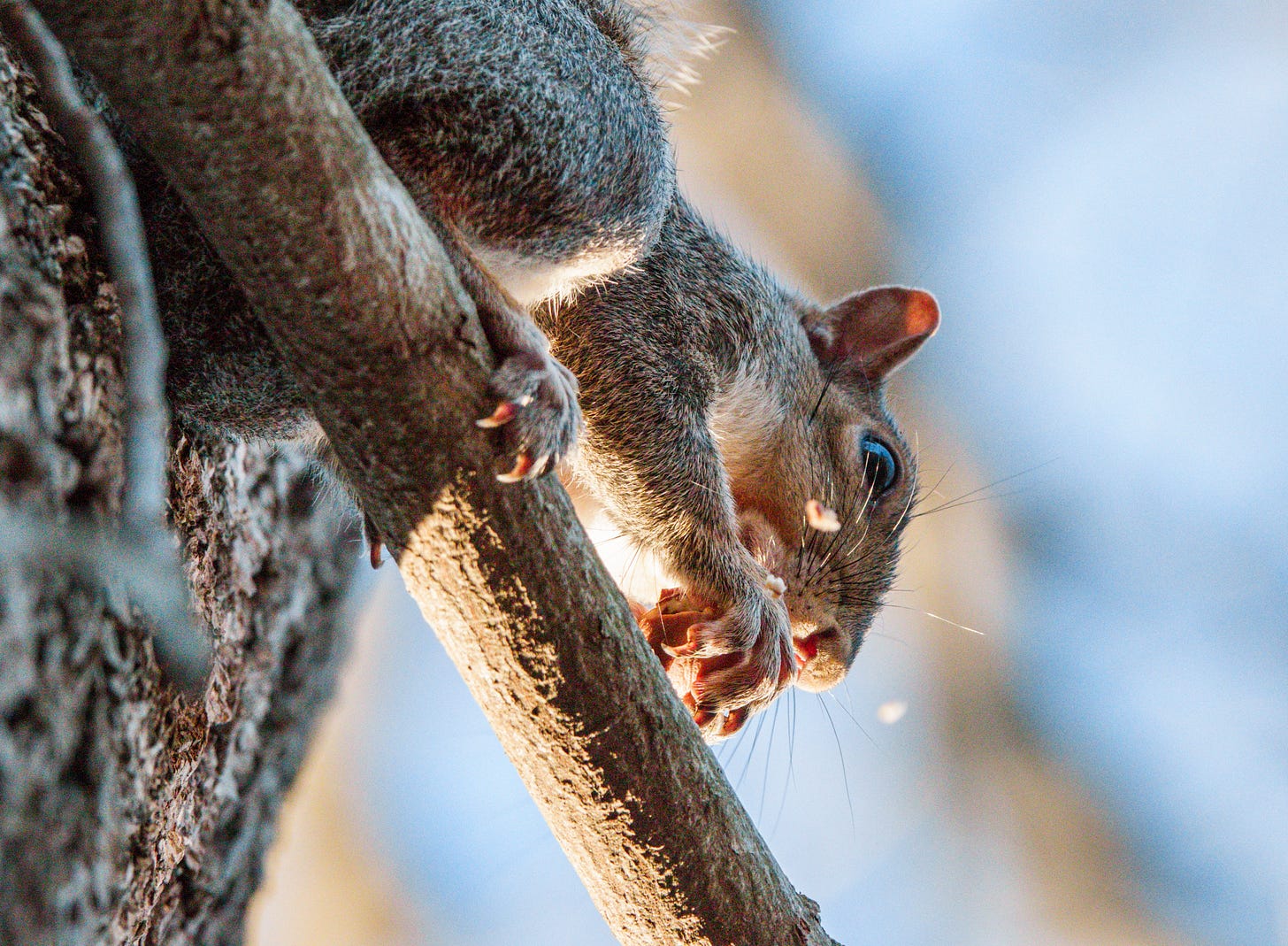
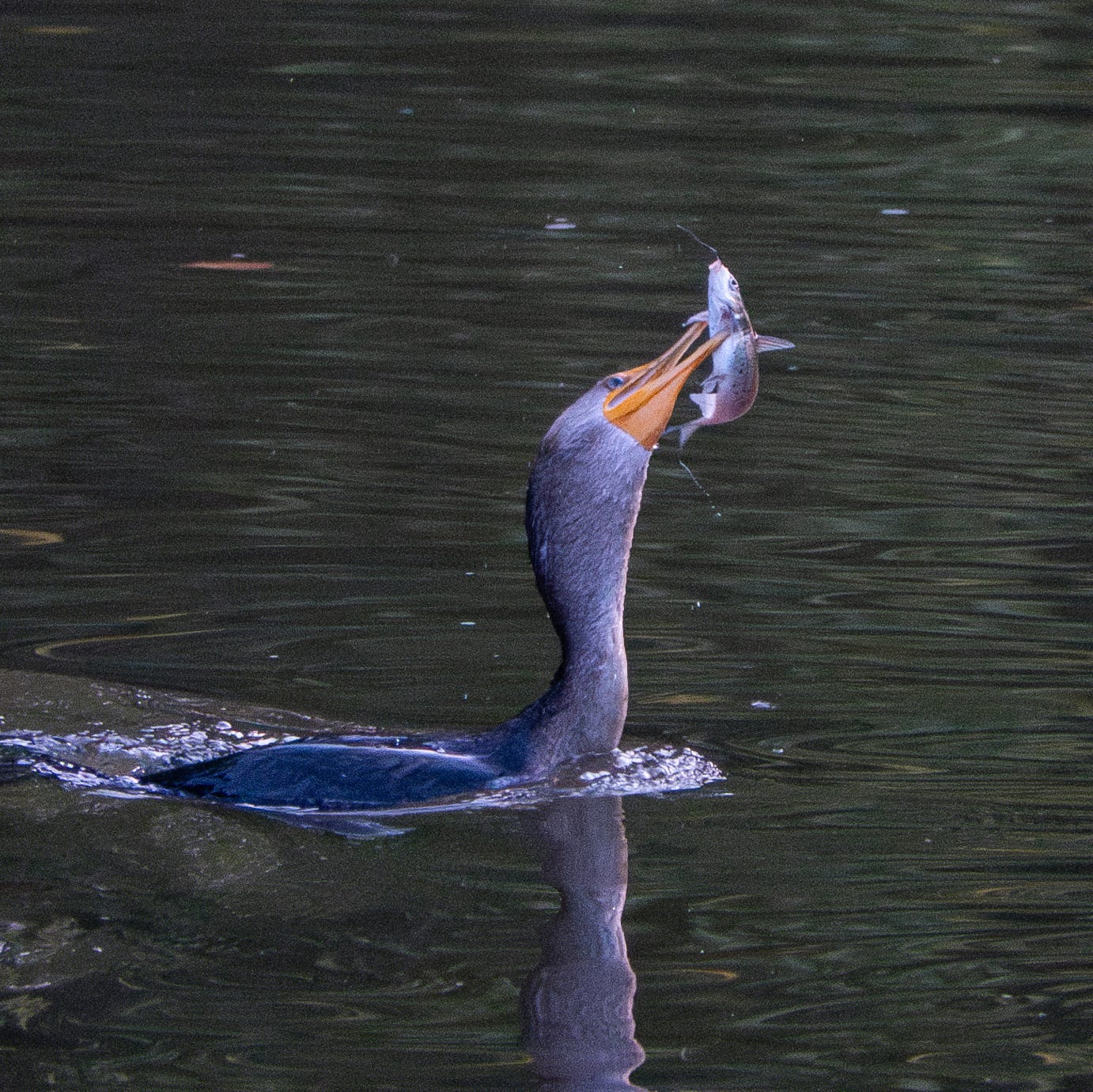
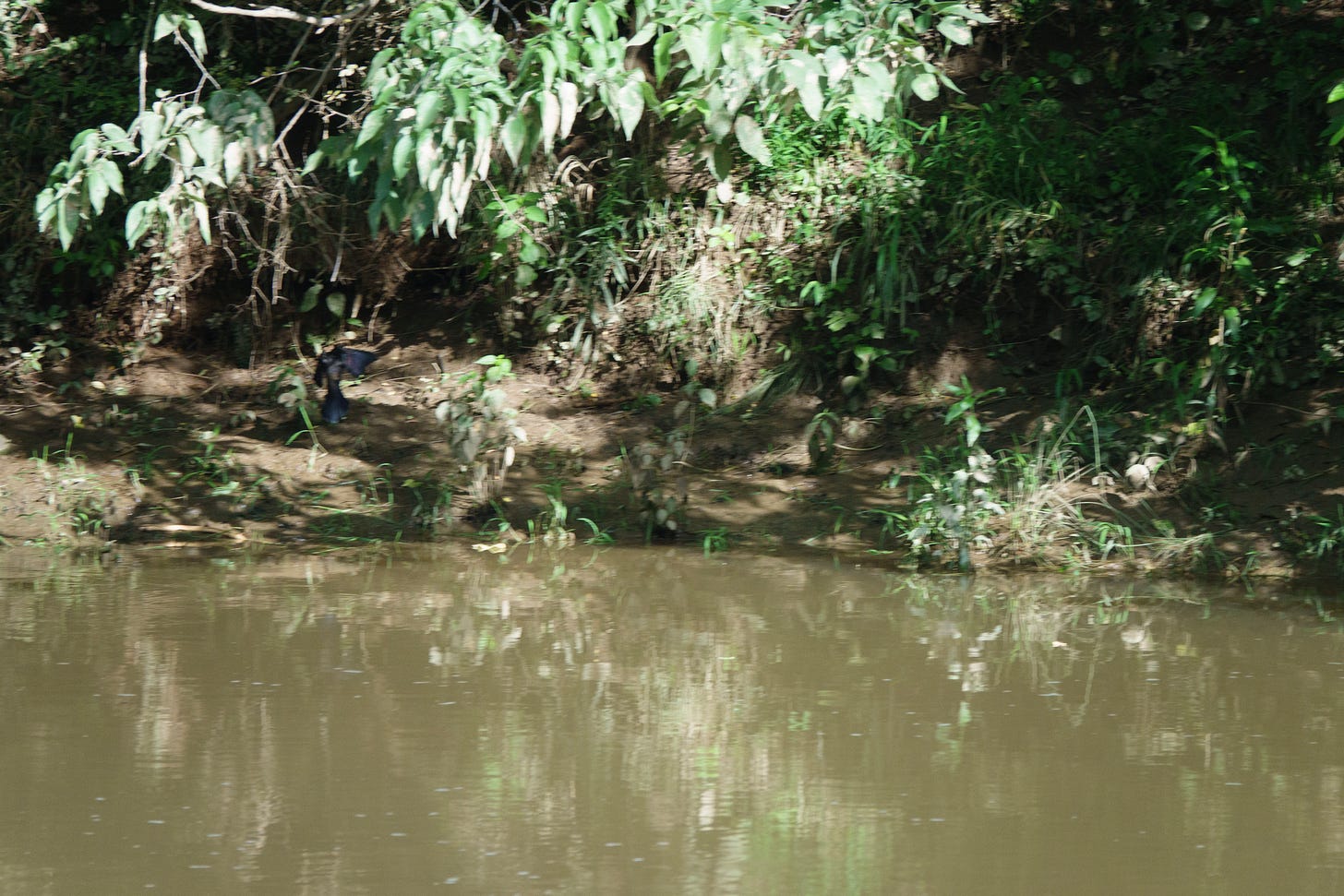
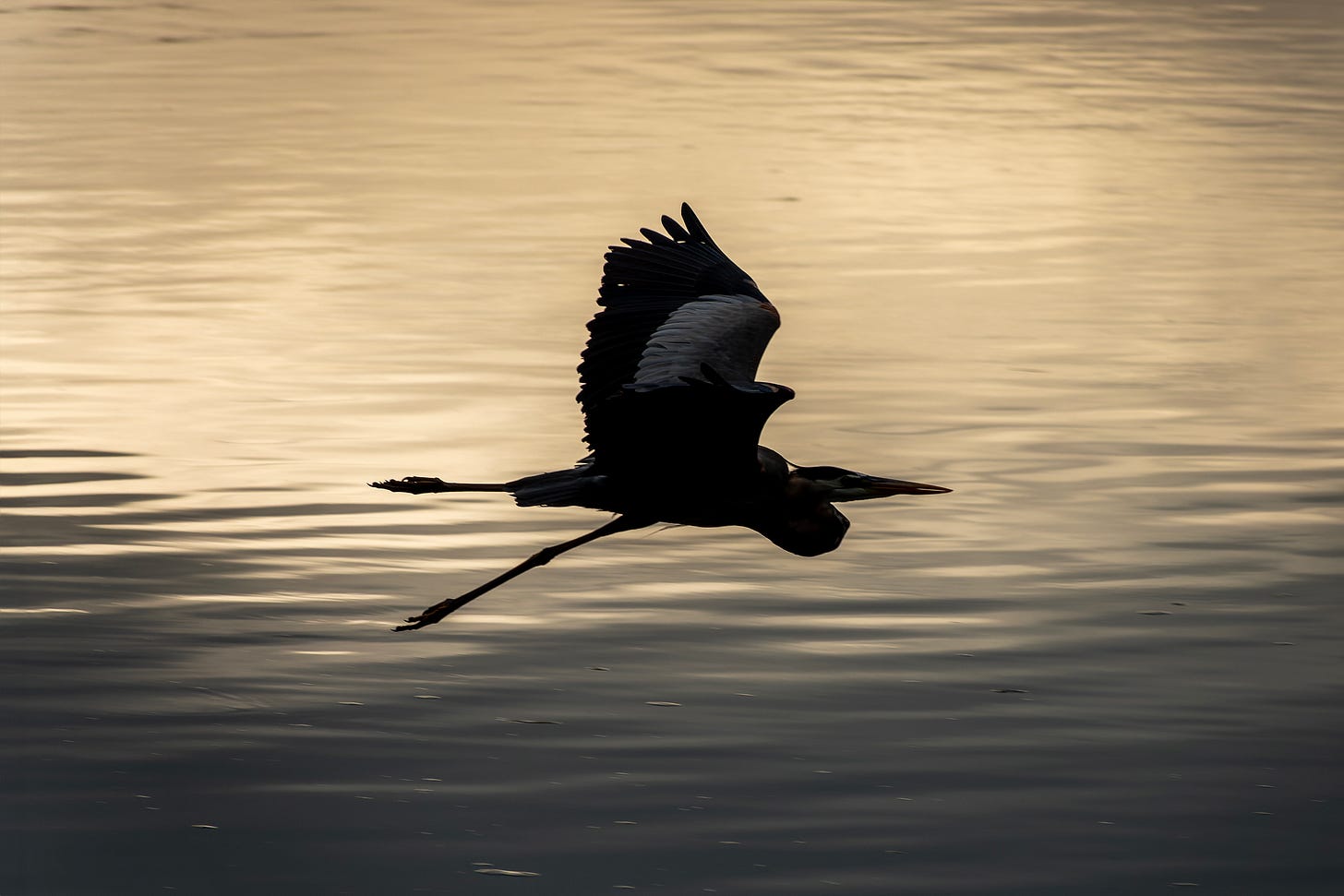

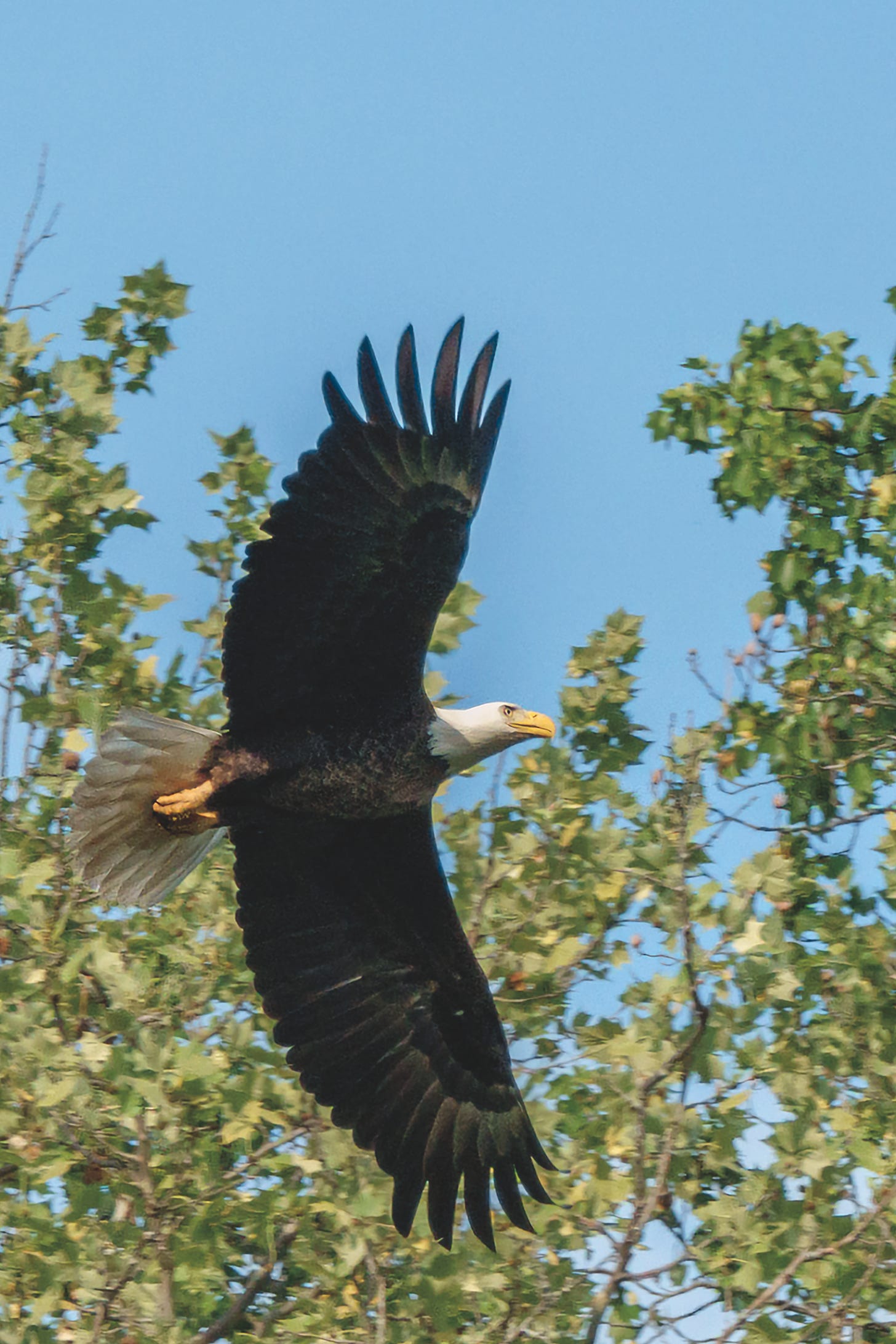
The osprey shot is incredible! Thanks for giving us a behind the scenes of how photographing wildlife works. The unpredictability of it all makes sense and creates fun, surprise and, of course, frustration, part of any creative process.
This was a fun read!
Misses serve many purposes! Thanks for this Donn! Some interesting photos and thoughts.